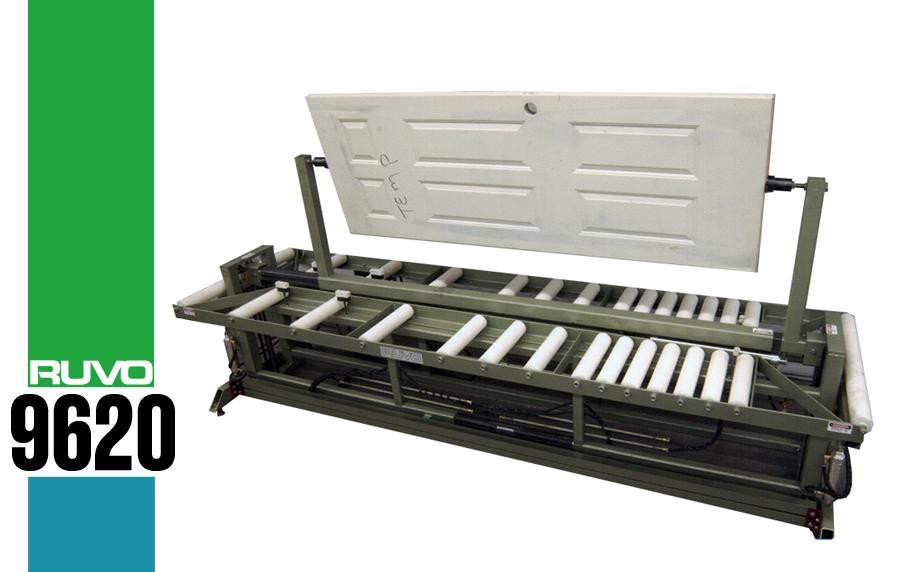Exterior doors are not merely functional elements of a building; they are the gateway to a home's character and the first impression visitors have of a property. Crafting these essential components of a building is a blend of art and engineering, requiring precision, creativity, and a deep understanding of materials. In this article, we delve into the world of exterior door production, exploring the intricacies of this intricate craft that marries aesthetics, security, and durability.
Design and Material Selection
The process of exterior door production begins with design and material selection. Each door is unique, and the choice of design and materials is crucial. The design phase involves creating a blueprint that defines the style, size, and structure of the door. This design should not only complement the architecture of the building but also align with the owner's aesthetic preferences.
Materials play a significant role in the door's performance and appearance. Exterior doors can be crafted from a variety of materials, including wood, fiberglass, steel, and composite materials. Each material has its own set of characteristics, such as durability, energy efficiency, and maintenance requirements. Expert door manufacturers help customers select the material that best suits their needs.
Crafting the Door
Once the design and materials are selected, skilled craftsmen and modern machinery come into play. Crafting an exterior door is a precise process that involves several key steps:
Cutting and Shaping: The selected material is cut and shaped according to the design specifications. This step involves creating the door's core, stiles, rails, and panels.
Joinery: Joinery techniques are used to connect the door's components securely. Traditional joinery methods, such as mortise and tenon, are often employed to ensure the door's structural integrity.
Veneer Application: If the door features veneer or decorative elements, these are meticulously applied to the surface of the door. Veneers can be made from various wood species or alternative materials to achieve the desired aesthetic.
Sealing and Finishing: Exterior doors require thorough sealing to protect against the elements. This may involve multiple layers of finish, including paint, stain, or clear coat, to enhance the door's beauty and longevity.
Hardware Installation: Hardware such as handles, locks, hinges, and peepholes are installed with precision, ensuring they function smoothly and securely.
Glazing and Insulation: For doors with glass panels, the glazing process is essential. This involves securing the glass, often with insulated glass units, to improve energy efficiency.
Quality Control: At various stages of production, quality control measures are implemented to verify that the door meets design specifications, structural integrity, and safety standards.
Customization and Personalization
One of the remarkable aspects of exterior door production is the ability to customize and personalize each door. Customization allows customers to choose the design, material, finish, and hardware that align with their unique preferences. This level of personalization ensures that each exterior door is a reflection of the homeowner's style and taste.
Customization can include various design elements, such as:
Panel styles: Choose from raised or flat panels, or opt for custom carving or engraving for a distinctive look.
Glass options: Select the type, style, and arrangement of glass panels to achieve the desired aesthetic and privacy level.
Finish and color: Pick from a wide range of finishes, stains, and paint colors to complement the home's exterior and interior.
Hardware choices: Decide on the style, material, and finish of doorknobs, handles, and locks to match the overall design.
Energy Efficiency and Security
Exterior door production is not solely about aesthetics. It's equally vital to ensure that doors provide energy efficiency and security. Modern exterior doors are designed to meet or exceed industry standards for insulation, weather resistance, and security.
Energy-efficient doors often feature:
Insulated cores: Materials like polyurethane foam provide excellent thermal insulation, helping to regulate indoor temperatures.
Weatherstripping: High-quality weatherstripping seals gaps, preventing drafts and moisture infiltration.
Energy-efficient glazing: Double or triple-pane glass with low-emissivity coatings enhances insulation and reduces heat transfer.
Security features include:
Reinforced frames: Sturdy door frames with reinforced strike plates enhance the door's resistance to forced entry.
Deadbolt locks: High-quality deadbolt locks are a crucial element of door security.
Impact-resistant materials: Exterior doors can be crafted from materials that resist impact and intrusion.
Security systems: Modern doors can be equipped with smart locks and access control systems for added security.
Sustainability and Eco-Friendly Practices
The importance of sustainability and eco-friendly practices cannot be overstated in exterior door production. Manufacturers are increasingly committed to using sustainable materials and environmentally responsible processes. Some key practices include:
Sourcing certified wood: Manufacturers source wood from responsibly managed forests certified by organizations like the Forest Stewardship Council (FSC).
Water-based finishes: The use of water-based paints and stains reduces the emission of volatile organic compounds (VOCs).
Recycling and waste reduction: Manufacturers implement recycling programs and waste reduction practices to minimize the environmental impact of production.
Energy-efficient manufacturing: Sustainable practices also encompass the efficient use of energy and resources throughout the manufacturing process.
For More Info:-
Vertical workflow door machines






Comments